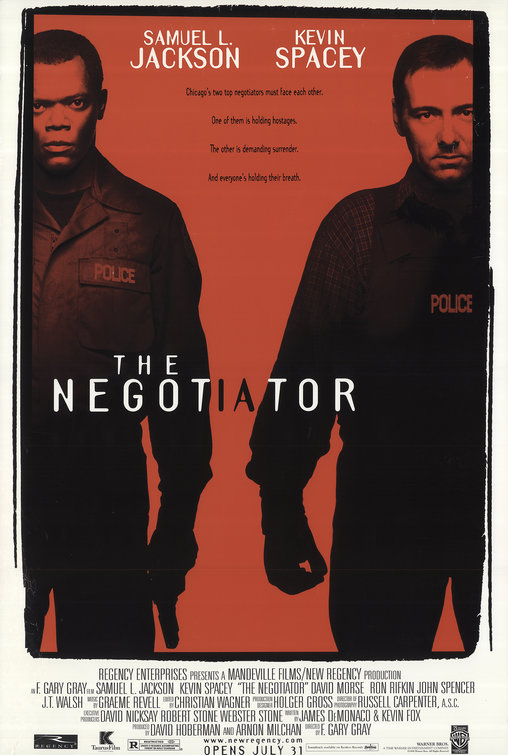Prosuder Menangani Incidet Tebusan

Subject: HOSTAGE/BARRICADED SUBJECT INCIDENT
Date Issued: 12-12-00
Revised:
PURPOSE: To identify procedures for handling a hostage/barricaded subject incident.
To establish guidelines and responsibilities for responding personnel to the scene of a
hostage/barricaded subject incident.
To minimize injury to officers, suspects, and others.
To provide for the notification and assistance of additional personnel, other law enforcement
departments, and support agencies.
POLICY:
A hostage/barricaded subject poses an extreme danger not only to officers who seek to arrest
him, but to other persons as well. However, it is the policy of the Police Department to expend all
reasonable efforts, when possible, to resolve barricaded incidents peaceably. The primary
objective of police action in these incidents is the preservation of life. The safety of hostages,
police personnel, innocent bystanders, and the offender must be our first concern. A secondary
objective includes the apprehension of the offender, recovery of property and restoration of order.
DEFINITIONS:
HOSTAGE INCIDENT
A situation in which a person(s) holds another person(s) against their will by force, threat or
violence, and law enforcement officials are present at the scene attempting to obtain the release
of the hostage.
BARRICADED PERSON
A situation in which a person(s) who is armed or believed to be armed, suicidal or mentally
unstable resists being taken into custody by barricading himself in a room, building or other
location.
INNER PERIMETER
The immediate area of containment as designated by the on scene supervisor. This area is
initially staffed by first responding officers until relieved by tactical response officers. Other
persons will be evacuated from this area to prevent injury or interference with the operation. Only
personnel authorized by the supervisor in charge should be allowed entry to this area.
OUTER PERIMETER
A secondary control area surrounding the inner perimeter, providing a safe zone for access to the
inner perimeter. This area is staffed by officers whose main responsibility is to deny unauthorized
access to the area, traffic and crowd control.
COMMAND POST
A secure location within proximity of the outer perimeter, if possible, from which the supervisor in
charge directs the operation. Considerations in selecting the location should include access to
support services (telephone, rest room facilities, etc.), away from civilian and vehicular traffic, if
possible, a safe entry route from which other responding units and support services (ambulance,
fire apparatus, etc.) can approach safely.
STAGING AREA
A designated location on the outer perimeter to which all responding personnel will report for
briefing, assignment and equipment. This area will generally be under the command of a
supervisor assigned by the supervisor in charge of the incident.
TACTICAL RESPONSE TEAM
A unit of specially selected, appointed, trained and equipped officers will provide assistance in
those incidents that would require special tactics, techniques and equipment. The Dane County
Sheriff ‘s Department Tactical Response Team will be used to respond to these needs, including
the negotiation team.
PROCEDURE:
INITIAL RESPONDING OFFICER RESPONSIBILITY
1. When an officer is confronted with a hostage/barricaded subject incident he must take
immediate steps to:
prevent injuries to himself and others by seeking cover and controlling the situation;
Evaluate the situation, gather and disseminate information, and clear the immediate area
of any bystanders or injured victims when possible;
Notify communications to request priority radio traffic and request a supervisor respond to
the scene;
Advise responding units of the safe route to enter the area and any helpful information
regarding the suspect and location;
Direct responding units to positions that will minimize the movement of the suspect and
prevent escape;
Detain all witnesses for debriefing; and,
Attempt to avoid confrontation in favor of controlling and containing the situation until
arrival of trained tactical or hostage negotiation personnel.
SUPERVISOR RESPONSIBILITY
1. The shift supervisor responding to the incident will be responsible for the following:
Evacuation of anyone who has been injured if possible;
Obtain all information from the initial responding officers regarding the suspect, weapons,
location and particulars of the incident;
Establish where the inner perimeter will be and assign uniformed officers. All personnel
assigned to or entering the inner perimeter will wear body armor;
Debrief any witnesses;
Provide all necessary information to officers on the scene, establish strict firearms control,
establish rules of engagement and inform all officers of the particulars of the incident and
the elements for use of deadly force that have been established should the incident
extend to their position;
Establish and detail officers to an outer perimeter;
Attempt to contact the barricaded suspect and arrest him without further incident.
2. If the supervisor is unable to resolve the incident he should immediately notify the Dane
County Sheriff’s Department Watch Commander that there is a need for a tactical
response team standby or call-out, and do the following:
Establish a command post and chain of command;
Summon additional personnel to the scene as required, (the supervisor should consider
requesting assistance from the Dane County Sheriff’s Department & surrounding
communities if immediately needed. Then replacing these officers with officers called into
duty early).
If necessary begin evacuation of all persons within the inner perimeter;
Establish a staging area and request all appropriate support equipment, ambulances, fire
apparatus, and additional personnel respond to that location;
Assign an officer to the staging area to brief all responding personnel and coordinate the
movement of all equipment;
Assign personnel at the command post to intelligence type duties concerning identities of
the suspect(s), background information, and obtaining plans or sketches of the barricaded
location from the Fire Department or Department of Public Works;
Maintain contact with the barricaded subject and attempt to constantly evaluate his
physical condition and emotional state.
3. When the Chief of Police arrives at the command post, he will conduct a debriefing of the
supervisor in charge and personnel who established initial containment. The Chief of
Police will have the final decision to request assistance from the Tactical Response
Team. If the Chief of Police is not available, the on scene supervisor has the authority to
request assistance from the Tactical Response Team.
4. All personnel, regardless of their operational component within the Department, will fully
and totally cooperate with the on scene supervisor during any emergency. This
coordinated effort is necessary to provide for the safety of all concerned, to alleviate any
misunderstanding, and ensure the success of the operation.
FIREARMS DISCIPLINE
1. Firearms discipline is essential during a hostage/barricaded subject incident. No
weapons fire will be authorized without the express approval of the on scene supervisor
or, the prerequisites for self defense are met. The prerequisites are:
Weapons fire is necessary to protect one's own life, or
Weapons fire is necessary to protect the life of another.
2. All supervisors shall give close attention to the matter of firearms discipline.
Any use of chemical agents, i.e., tear gas, by other than Tactical Response officers must
be authorized by the supervisor in charge.
3. Nothing in this procedure precludes the lawful use of force, deadly or otherwise, by
members of this Department in protecting themselves or others from death or serious
injury from aggressive action by the hostage taker or barricaded subject.
NEGOTIATING TACTICS
1. Since no two hostage situations are alike there can be no standardized plan for
negotiations. Each incident should be treated individually. The Dane County Sheriff’s
negotiating will be used for these purposes.
2. The on scene supervisor is responsible for ensuring that contact has been initiated and
maintained with the hostage taker or barricaded subject. If necessary, this task may be
relinquished to a negotiator upon his arrival.
3. The on scene supervisor is responsible for coordinating with theTactical supervisor the
contacting of utility companies for the timely shutdown of services.
4. Responsible negotiating tactics include, but are not limited to the following:
Buying time. As a rule the more time the captor spends with the hostage, the less likely
he is to take the hostage's life.
Obtaining information from the offender(s) that is helpful in understanding his
mental and emotional condition.
Allowing the offender(s) to ventilate anxieties.
Developing trust with the offender(s).
Assisting the offender(s) with solving problems in a realistic and non-violent manner.
Influencing the offender(s) to release the hostages and surrender peaceably.
5. Practically all demands are negotiable with certain exceptions. The following will not be
provided:
Weapons and ammunition;
Drugs or alcohol;
Additional people or an exchange of people, including police officers, for a hostage; and,
Releasing persons who are being held in legal custody.
6. Negotiable items are left to the discretion of the supervisor based on the incident at hand.
Items such as food, water, cigarettes and other physical comforts should be considered
base negotiable items and used appropriately.
RELOCATION
1. Whenever possible the supervisor in charge will not allow the offender(s) to leave the
scene of containment. All requests for vehicles or relocation will be denied.
2. In the event the offender(s) escape containment, provisions for chase and surveillance
vehicles will be initiated.
3. In the event the escape route enters another jurisdiction, Dispatch will advise those
jurisdictions and request their assistance.
CONCLUSION
1. The on-scene supervisor and the Tactical Response supervisor will maintain the integrity
of the outer and inner perimeter until the hostage and offender have been removed from
the scene and investigative personnel have the opportunity to conduct a proper crime
scene investigation.
AFTER-ACTION REPORT
1. The Chief of Police will assign a supervisor involved in the incident to complete an afteraction
report that outlines actions taken and makes recommendations for improvements
in future incidents.


Comments